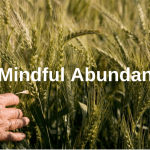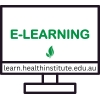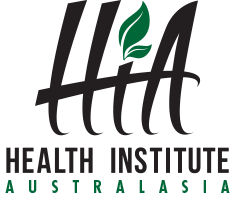
YUOABU01 – MINDFUL ABUNDANCE
July 18, 2022
SYANEC01 – Neck Series
April 4, 2023Ayurveda is one of the oldest medical systems in the world. Its pedagogy comes from roots steeped in the time-tested study of nature, and our place in the universe – something with which, we, as a culture have lost our connection.
This traditional system of medicine evolved over thousands of years from studying the most subtle aspects of nature, namely Mother Nature and human nature. These studies concluded that the most profound aspects of the human body and the most profound aspects of nature were not the most obvious, they were the most subtle. It was through intense investigations of the most subtle aspects of nature that researchers found the true operating system that was the key to unravelling the mystery behind the human body and life itself.
This ancient science understood that the most refined and subtle aspects of the body had the capacity to deliver the most powerful healing and ultimately, transformational changes.
While healing and optimal health are always major themes in this system of medicine, its primary goal is to first restore balance to the body, so that the mind can gain the awareness needed to make deep mental, emotional and spiritual transformational changes. Healing is a means to a greater end. They were seeking truth: the same, non-changing, reliable truth that they had witnessed in nature, season after season, year after year, and generation after generation.
While nature provides a reliable and stable canvas for life, life itself takes advantage of nature’s predictable cycles by evolving at every level, from the most subtle to the most blatant. The human body is also evolving and the potential is unlimited. Much of human evolution is linked to a growing level of awareness that allows human beings to shed what Ayurveda terms the ‘cause of disease’, namely, a mistake of the intellect, which is also an obstacle to realising one’s full human potential.
Removing the mistake of the intellect first requires the heightening of one’s state of awareness, and then the ability to employ transformational actions or therapies, such as dietary modifications, lifestyle changes, as well as herbal and energetic support, at the most effective of levels. This includes becoming conscious of subtle circadian cycles that underwrite both the human body and nature itself. This science tells us that we must live in harmony with these circadian rhythms for optimal health, along with a lifestyle that is in balance with daily, monthly, and seasonal light/dark circadian cycles.
People are distracted by their senses, looking outside themselves for ways to be more contented, less hungry, and safe from the illusion of wealth and material gain. The fascination with sensory stimulation is a strong source of ‘mistake of the intellect’ and is the cause for the onset of mental, physical and emotional diseases. This science is based on living in truth. The word Veda means ‘science’, or ‘knowledge’,and ayus means ‘life’, so the most accurate definition of Ayurveda, is that it is a system of medicine designed to reveal the ‘truth of your life.’
From the perspective of healing, this science believes in supporting the body’s ability to heal itself, rather than doing the healing for the body, as we see in Western medicine and many forms of natural medicine today. Healing is the understanding of how to bring the body and its energies back into balance. Restoring and heightening the body’s self-awareness enables the body to clearly recognise health problems as signals, and in a spontaneous and effortless manner, with the coexistence of opposites, heal itself. Healing interventions include both dietary and lifestyle recommendations, internal and external applications using diet, herbs and nourishing special treatments.
Ayurveda is a vast and deep science of lifelong study. It offers us tangible, and oftentimes ‘bigger picture’ insights into who we are as individuals, as living beings, in relationship with ourselves, with others, the environment, the world, and with existence in general. This course is Ayurveda 101. It is your starting point.
You can find out more about Ayurveda in many of our short and longer Ayurvedic courses, in person and online.
Let’s start with exploring what could be more interesting, wondrous and magical than the inner workings of yourself, and how incredible nature is.
We can start by asking questions such as why we are, who we are, why we are here, and what our purpose is in this life?
PREREQUISITE
There are no required prerequisites for this course.
It is aimed at beginners.
Learn for self-understanding, and as a prerequisite to Ayurvedic practices such as:
- Ayurvedic Natural Facial Massage, Mukhyabhyanga
- Marma Point Facelift Treatment: Ayurvedic Facelift Pressure Point
- Kansa, Healing Wand Facial Rejuvenating
- Ayurvedic Full Body Massage, Abhyanga
- Shirodhara
- Katibasti
- The Beginner’s Guide to the Ayurvedic Diet
- Diploma of Ayurvedic Lifestyle Consultation
- Advanced Diploma in Ayurveda
FORMAT
Online
WHO SHOULD TAKE THIS COURSE
This course is a suitable introduction for any practitioner or student of health, working as a health professional in one or more of the following modalities: Aromatherapy, Massage, Reflexology, Complementary Therapies, Naturopathy, Yoga or any other healing art.
COURSE OUTLINE
In this course you will be introduced to
– a basic understanding of Ayurveda
- the roots, foundational texts and milestones in its development
- the concepts and fundamental principles of Ayurveda, and its eight special branches
- the fundamental understanding of Ayurvedic health
TABLE OF CONTENTS
LESSON 1. Introduction to Understanding Ayurveda
Topic 1.1 Discovering Ayurveda
Topic 1.2 Ancient Medicine, Modern Application
Topic 1.3 Ayurveda’s Time-Tested Approach To Health And Wellbeing
Topic 1.4 Ayurveda Offers A Wonderful Healing Potential
LESSON 2 Milestones in the Development of Ayurveda
Topic 2.1 The roots of ayurveda
Topic 2.2 The Foundational Texts
Topic 2.3 Modern Historic Milestones
LESSON 3 Concepts and Fundamental Principles of Ayurveda
Topic 3.1 Origins
Topic 3.2 The genesis of a human being, purusha
Topic 3.3 The fundamental study of ayurvedic medicine
Topic 3.3 Eight specific, clinical branches of ayurveda, ashtanga ayurveda
LESSON 4 Positive Health
Topic 4.1 Ayurvedic health
Topic 4.2 The five elements
Topic 4.3 Actions, karma
Topic 4.4 Formation of a human being
Topic 4.5 Aims of life
Topic 4.6 Constitution, prakruti
Topic 4.7 Primary fuctional entities, doshas
Topic 4.8 The ayurvedic pillars of health
Topic 4.9 Digestive power, agni
Topic 4.10 The building blocks, dhatus
Topic 4.11 Waste, mala
Topic 4.12 Essence and immunity, ojas
Topic 4.13 Toxic residue, ama
Topic 4.14 Ayurvedic detox: strengthening agni, digesting ama
Topic 4.15 The channels, srotas
Topic 4.16 Preventing disease
___________________________________________________
© Copyright – All rights reserved. In no way is it legal to reproduce, duplicate, or transmit any part of this document in either electronic means or in printed format. Recording of this publication is strictly prohibited and any storage of this document is not allowed unless with written permission from Shanti Gowans. All rights reserved.
The information provided herein is stated to be truthful and consistent, in that any liability, in terms of inattention or otherwise, by any usage or abuse of any policies, processes, or directions contained within is the solitary and utter responsibility of the recipient reader. Under no circumstances will any legal responsibility or blame be held against the publisher for any reparation, damages, or monetary loss due to the information herein, either directly or indirectly. Respective authors own all copyrights not held by the publisher.
Legal Notice: This document is copyright protected. This is only for personal use. You cannot amend, distribute, sell, use, quote or paraphrase any part or the content within this document without the consent of the author or copyright owner. Legal action will be pursued if this is breached.
Disclaimer Notice: Please note the information contained within this document is for educational purposes only. Every attempt has been made to provide accurate, up to date and reliable complete information. No warranties of any kind are expressed or implied. Readers acknowledge that the author is not engaging in the rendering of legal, financial, medical or professional advice. By reading this document, the reader agrees that under no circumstances are we responsible for any losses, direct or indirect, which are incurred as a result of the use of information contained within this document, including, but not limited to, errors, omissions, or inaccuracies.




